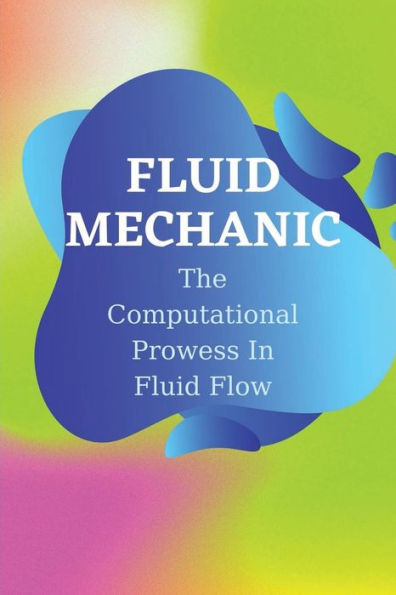Fluid Mechanic: The Computational Prowess In Fluid Flow:
Computational fluid dynamics (CFD) is a branch of fluid mechanics that uses numerical analysis and data structures to analyze and solve problems that involve fluid flows. Computers are used to perform the calculations required to simulate the free-stream flow of the fluid, and the interaction of the fluid (liquids and gases) with surfaces defined by boundary conditions. With high-speed supercomputers, better solutions can be achieved, and are often required to solve the largest and most complex problems. Ongoing research yields software that improves the accuracy and speed of complex simulation scenarios such as transonic or turbulent flows. Initial validation of such software is typically performed using experimental apparatus such as wind tunnels. In this text, we will cover the range between these two extremes: when viscosity and momentum are both important, at least in some significant part of the flow field. This is by no means an exhaustive reference on the subject of computational fluid dynamics; rather, it is an introduction and overview, going just far enough to get the reader started along this path with some helpful direction based on years of experience.Computational fluid dynamics (CFD) is a branch of fluid mechanics that uses numerical analysis and data structures to analyze and solve problems that involve fluid flows. Computers are used to perform the calculations required to simulate the free-stream flow of the fluid, and the interaction of the fluid (liquids and gases) with surfaces defined by boundary conditions. With high-speed supercomputers, better solutions can be achieved, and are often required to solve the largest and most complex problems. Ongoing research yields software that improves the accuracy and speed of complex simulation scenarios such as transonic or turbulent flows. Initial validation of such software is typically performed using experimental apparatus such as wind tunnels. In this text, we will cover the range between these
1140044785
Fluid Mechanic: The Computational Prowess In Fluid Flow:
Computational fluid dynamics (CFD) is a branch of fluid mechanics that uses numerical analysis and data structures to analyze and solve problems that involve fluid flows. Computers are used to perform the calculations required to simulate the free-stream flow of the fluid, and the interaction of the fluid (liquids and gases) with surfaces defined by boundary conditions. With high-speed supercomputers, better solutions can be achieved, and are often required to solve the largest and most complex problems. Ongoing research yields software that improves the accuracy and speed of complex simulation scenarios such as transonic or turbulent flows. Initial validation of such software is typically performed using experimental apparatus such as wind tunnels. In this text, we will cover the range between these two extremes: when viscosity and momentum are both important, at least in some significant part of the flow field. This is by no means an exhaustive reference on the subject of computational fluid dynamics; rather, it is an introduction and overview, going just far enough to get the reader started along this path with some helpful direction based on years of experience.Computational fluid dynamics (CFD) is a branch of fluid mechanics that uses numerical analysis and data structures to analyze and solve problems that involve fluid flows. Computers are used to perform the calculations required to simulate the free-stream flow of the fluid, and the interaction of the fluid (liquids and gases) with surfaces defined by boundary conditions. With high-speed supercomputers, better solutions can be achieved, and are often required to solve the largest and most complex problems. Ongoing research yields software that improves the accuracy and speed of complex simulation scenarios such as transonic or turbulent flows. Initial validation of such software is typically performed using experimental apparatus such as wind tunnels. In this text, we will cover the range between these
8.99
In Stock
5
1

Fluid Mechanic: The Computational Prowess In Fluid Flow:
106
Fluid Mechanic: The Computational Prowess In Fluid Flow:
106Paperback
$8.99
8.99
In Stock

Product Details
| ISBN-13: | 9798536514160 |
|---|---|
| Publisher: | Larisa Terkelsen |
| Publication date: | 08/22/2021 |
| Pages: | 106 |
| Product dimensions: | 6.00(w) x 9.00(h) x 0.25(d) |
From the B&N Reads Blog
